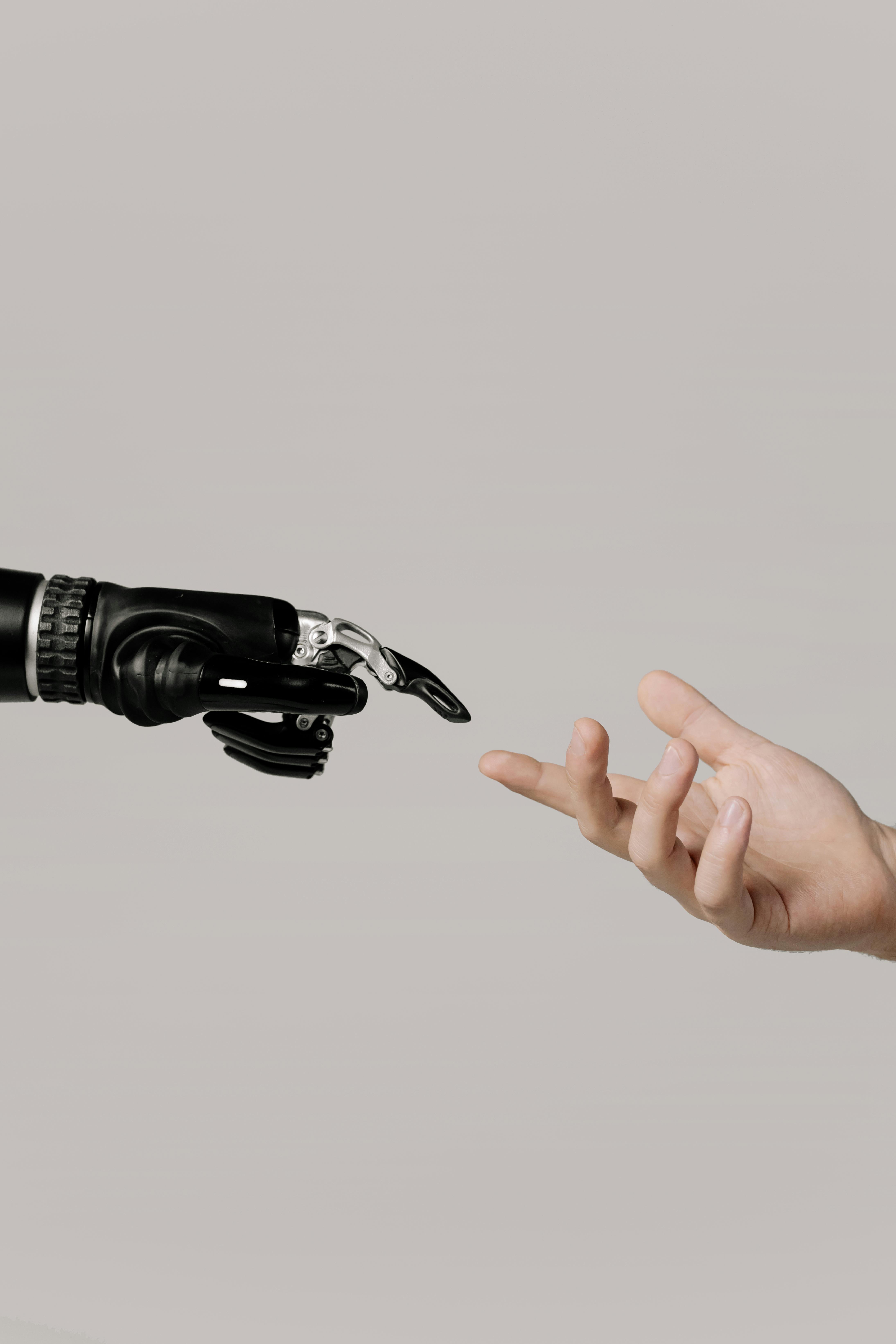The Future of Wearable Health Devices 2025: Personalized Wellness, AI Insights, and Disease Prevention
Explore how wearable health technology in 2025 is revolutionizing personalized wellness through AI-driven insights, mental health monitoring, early disease detection, and preventive care.

By SeeTrendingNow Team
In 2025, wearable health technology has evolved beyond step counting to become a cornerstone of proactive health management, offering early disease detection and personalized wellness strategies that are transforming lives.
🎯 A Health Revolution You Wear
Imagine a world where your smartwatch alerts you to a potential heart arrhythmia before any symptoms arise, or your fitness ring detects elevated stress levels and guides you through a calming breathing exercise—all seamlessly integrated into your daily routine.
Welcome to 2025, where wearable health technology is redefining what it means to be "healthy." No longer limited to fitness enthusiasts, wearables have become essential tools for managing chronic diseases, optimizing performance, monitoring mental health, and preventing serious illnesses.
Whether you're a tech enthusiast, a healthcare provider, or someone striving for better health, this comprehensive exploration will provide insights into how wearable technology is shaping the future of wellness.
📈 Market Overview: The Surge of Wearable Health Devices
The wearable health technology market has witnessed exponential growth, reflecting its increasing importance in modern healthcare.
-
Market Size: The global wearable medical devices market is projected to reach USD 53.98 billion in 2025, growing at a CAGR of 25.53% from 2025 to 2030 reaching $168.29 Billion by 2030. This surge is driven by the rising demand for remote patient monitoring and home healthcare. :contentReference[oaicite:0]0
-
Regional Insights: North America holds a significant share, with the U.S. wearable medical device market expected to surpass USD 120.09 billion by 2034, indicating a robust adoption rate. :contentReference[oaicite:1]1
-
Product Segmentation: Diagnostic devices account for the largest revenue share, emphasizing the focus on health monitoring and early disease detection. :contentReference[oaicite:2]2
🛤️ A Brief History: From Step Counters to Health Guardians
In the early 2010s, wearables primarily functioned as fitness trackers, counting steps and monitoring basic physical activity. Fast forward to 2025, and these devices have transformed into sophisticated health guardians capable of:
-
Continuous Monitoring: Tracking vital signs such as heart rate, oxygen saturation, ECG, and blood pressure in real-time.
-
Minimally-Invasive Glucose Monitoring: Innovations like the Dexcom G7 offer continuous glucose monitoring with minimal skin insertion and no routine fingerstick calibrations required. :contentReference[oaicite:3]3
-
Sleep Analysis: Advanced algorithms analyze sleep stages, providing insights into REM and deep sleep cycles.
-
Mental Health Monitoring: Devices now monitor indicators like heart rate variability (HRV) that can be associated with stress, mood, and anxiety levels, although full clinical validation is ongoing.
Failed to load tweet. View on Twitter:
https://twitter.com/x/status/1916001596862800341These advancements are the result of breakthroughs in miniaturized sensors, cloud computing, and machine learning algorithms.
🤖 The Power of AI: Smarter Wearables for Smarter Wellness


Artificial Intelligence is now the brain of modern wearables, transforming them from data collectors into proactive health assistants.
Predictive Health Insights
AI analyzes vast amounts of data to predict health risks:
-
Atrial Fibrillation Detection: Wearables like the Apple Watch can detect irregular heart rhythms suggestive of atrial fibrillation early, prompting timely medical intervention. Predictive capabilities are an area of active research.
-
Diabetes Management: AI algorithms enhance early diabetes detection by analyzing patterns in sleep, activity, and diet logs.
Personalized Health Recommendations
Devices like WHOOP 5.0 and Fitbit Luxe provide hyper-personalized coaching:
-
Tailored workout intensity recommendations.
-
Sleep recovery scores.
-
Stress management strategies.
Imagine your wearable knowing when you need a rest day—before you do.
Emergency Alerts and Real-Time Interventions
Wearables can autonomously act during emergencies:
- Fall Detection: Apple Watch's fall detection feature has been instrumental in triggering emergency calls during critical situations. :contentReference[oaicite:5]5
Wouldn't you want your wearable to call for help when you can't?
🧠 Mental Health Matters: How Wearables Are Helping Minds, Not Just Bodies

In 2025, mental health monitoring is no longer a side feature—it’s a central pillar of wearable health technology.
According to the World Health Organization, mental health disorders now affect 1 in 4 people globally. With this in mind, wearables are being designed to detect, monitor, and even intervene when early signs of anxiety, depression, or burnout appear.
Mood and Stress Monitoring: Continuous Emotional Thermometers
Modern wearables like the Oura Ring Gen 4, Fitbit Sense 2, and Samsung Galaxy Watch 6 track emotional health by analyzing:
- Heart Rate Variability (HRV) fluctuations
- Electrodermal activity (EDA) to measure stress responses
- Sleep quality deterioration linked to depressive episodes
- Voice tone changes (recently added to Amazon Halo Rise) to detect emotional shifts
Clinical Study Insight:
Emerging research suggests that heart rate variability (HRV) patterns may offer promising early indicators for depression risk, but large-scale clinical validations are still ongoing.
It's no longer just about "how many steps you take"—it's about "how resilient your mind is becoming."
Cognitive Enhancement: Boosting Brain Fitness
Some devices now coach your brain:
- Focus Assist Programs: Wearables like Muse S 2 offer neurofeedback to improve cognitive focus.
- Mindfulness Alerts: Based on rising cortisol levels, devices suggest breathing exercises or meditation sessions.
Recent pilot studies indicate that mindfulness prompts via wearables may help reduce daily anxiety symptoms, but broader clinical trials are underway to validate these findings.
🛡️ Preventive Health: Stopping Problems Before They Start
If reactive healthcare was the story of the 20th century, proactive, preventive health defines the 21st.
Wearables are not just health trackers—they are early warning systems.
Breakthrough Examples
-
Dexcom G8 and Abbott’s Lingo:
These next-gen glucose monitors predict and alert diabetic patients to glucose spikes up to 2-4 hours before symptoms develop. -
BioIntelliSense BioButton:
Worn discreetly on the chest, it detects respiratory infections like pneumonia 48-72 hours earlier than standard clinical symptoms appear. Used by hospitals for remote COVID-19 patient monitoring during late 2024.
⚖️ Challenges: Data Privacy, Health Equity, and Validation
While the potential is exciting, serious challenges remain that the industry must address.
1. Data Privacy Concerns
- Public concern about digital health data privacy is rising, with a 2023 Pew Research report showing 72% of Americans supporting stronger regulations over personal data use.
- Companies must prioritize end-to-end encryption, edge computing, and transparent consent models.
Example: Apple’s HealthKit architecture uses on-device machine learning to minimize cloud exposure, setting a gold standard.
2. Health Equity and Accessibility
- Average cost of high-end health wearables? Around $400-$700.
- Marginalized communities risk being left out of this healthcare revolution.
Bridging the gap will require subsidies, insurance partnerships, and government-backed public health initiatives.
3. Clinical Validation: FDA Approval Matters
- Not all "health trackers" are truly medical-grade.
- In 2024, a significant number of new wearable health devices entered the market, but many still lack formal FDA medical-grade clearance.
Consumers must look for:
- FDA 510(k) clearances for diagnostics.
- CE Mark certification for EU users.
🔥 Industry Regulations: The 2025 Landscape
In response to the wearable boom, regulatory frameworks have been tightening:
- FDA's Digital Health Center of Excellence: Fast-tracking approvals for software-based medical devices.
- EU MDR Compliance (effective 2025): All wearables sold in Europe with health claims must undergo rigorous post-market surveillance.
- GDPR 2.0 Enhancements: Mandates opt-in for every category of data use, particularly biometric and health data.
The path forward is clear: to thrive, companies must embrace transparency, validation, and accessibility.
🚀 Emerging Trends: What’s Next for Wearable Health Tech?
The pace of innovation is accelerating. Some technologies that seemed like science fiction just a few years ago are now either launching or undergoing clinical testing in 2025.
Failed to load tweet. View on Twitter:
https://twitter.com/x/status/1019354212059222017Here’s what’s next:
🧬 1. Biometric Tattoos: Your Skin Becomes the Sensor
Forget bulky wristbands and chest straps. In 2025, research led by the University of Texas at Austin and NIH-funded biotech startups is advancing biometric tattoos:
- Ultra-thin, flexible "tattoos" embedded with micro-sensors
- Monitor blood glucose, hydration levels, blood pressure, and electrolyte balance
- Expected to enter early consumer markets by late 2026
Your skin itself could soon monitor and report your vital signs, eliminating the need for external wearables.
🥼 2. Ingestible Wearables: Smart Pills Are Now a Reality
Ingestible sensors—tiny electronic devices you swallow—are now FDA-approved for specific uses:
- Proteus Discover, originally introduced in earlier forms before 2024, expanded its applications in 2024 to monitor medication adherence for hypertension and psychiatric treatments.
- New ingestibles monitor gut microbiome activity to predict diseases like inflammatory bowel disease or colorectal cancer.
Ingestibles create real-time dashboards of:
- Digestion health
- Core body temperature
- Internal pH levels
🤖 3. Emotional AI Integration: Devices That Sense Your Feelings
Companies like Emotiv, Affectiva, and Replika AI are merging emotional recognition with wearables:
- Voice tone analysis to detect emotional states
- Facial microexpression detection (via smart glasses and AR headsets)
- HRV + breathing patterns analyzed for deep mood understanding
Future wearables will:
- Suggest interventions ("Call a friend," "Take a 10-minute break")
- Offer gentle AI-driven companionship during lonely periods
- Alert healthcare providers in case of mental health crises
Your wearable won't just track your heart rate — it will care about your emotional wellbeing too.
🏥 4. Wearables in Clinical Trials: Medicine Meets Real Life
Pharma giants like Pfizer and Novartis are now embedding wearables into drug trials:
- Remote monitoring of patient adherence and side effects
- Real-world efficacy data collected continuously
- Reduced trial durations by up to 22% according to a 2024 McKinsey report
This could mean faster drug approvals and more personalized prescriptions in the near future.
🧭 How to Choose the Right Wearable for You
With hundreds of options in 2025, choosing the right device can be overwhelming. Here’s a simplified guide:
| Purpose | Best Device Example | Key Features |
|---|---|---|
| Fitness and Recovery | WHOOP 5.0 | Strain, recovery, HRV, sleep stage tracking |
| Heart Health Monitoring | Apple Watch Ultra 2 | ECG, Afib detection, blood oxygen, fall detection |
| Stress and Sleep Focus | Oura Ring Gen 4 | Stress scores, mood tracking, REM sleep optimization |
| Diabetes Management | Dexcom G8 CGM | Continuous glucose monitoring, predictive alerts |
| Remote Chronic Care | BioButton / BioSticker | Respiratory, temperature, and cardiac anomaly tracking |
| Mental Health Resilience | Fitbit Sense 2 + Muse S2 Headband | EDA stress scans, mindfulness training, neurofeedback |
| All-In-One Lifestyle Device | Samsung Galaxy Watch 6 | Fitness, ECG, body composition, sleep, stress tracking |
🔑 Key Tips Before Buying:
- Check Clinical Validation: Look for FDA 510(k) clearance for any device making medical claims.
- Assess Data Privacy Policies: Choose brands transparent about data use.
- Battery Life Matters: Especially for continuous monitoring—aim for 4+ days.
- Comfort and Wearability: Daily compliance drops significantly if a wearable device feels uncomfortable.
Pro Tip: If you're managing a chronic condition, consult your physician before selecting a wearable.
🎯 Conclusion: The Wearable Health Revolution is Here—and It's Personal
The year 2025 marks a fundamental shift in how we think about health:
- From reactive care to proactive prevention
- From episodic doctor visits to continuous everyday health optimization
- From one-size-fits-all advice to hyper-personalized wellness plans
Wearable health tech isn't just for the fitness-obsessed or early adopters anymore. It’s becoming a critical part of everyone's healthcare toolkit—helping to detect diseases earlier, monitor mental wellbeing continuously, and optimize physical performance intelligently.
As emotional AI, ingestible devices, and biometric tattoos enter mainstream healthcare, our relationship with our own health will deepen profoundly.
📢 What wearable innovation excites you the most—biometric tattoos, emotional AI, or ingestibles? Let’s discuss in the comments!


